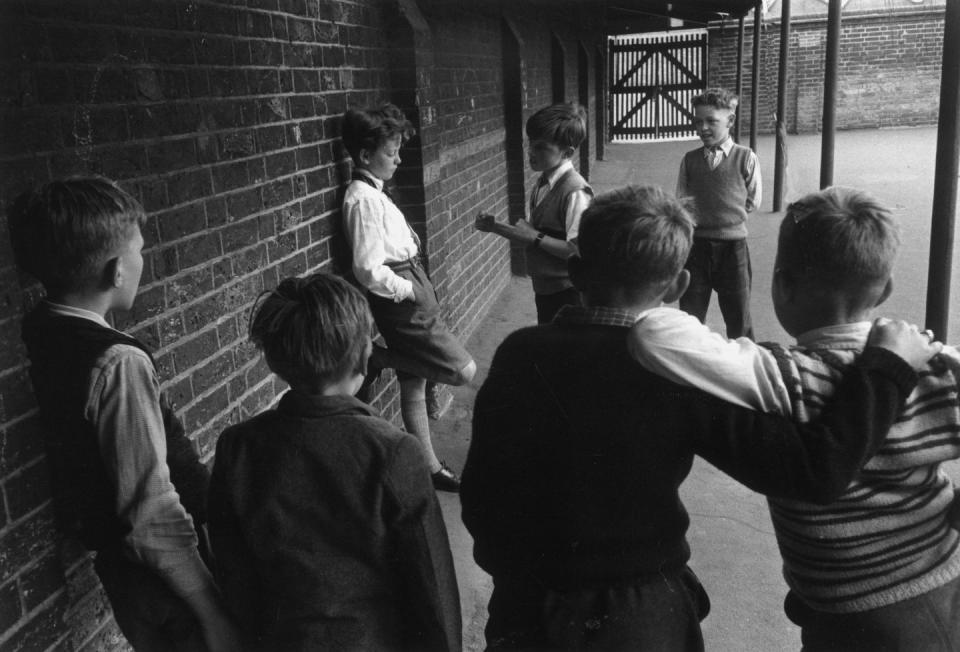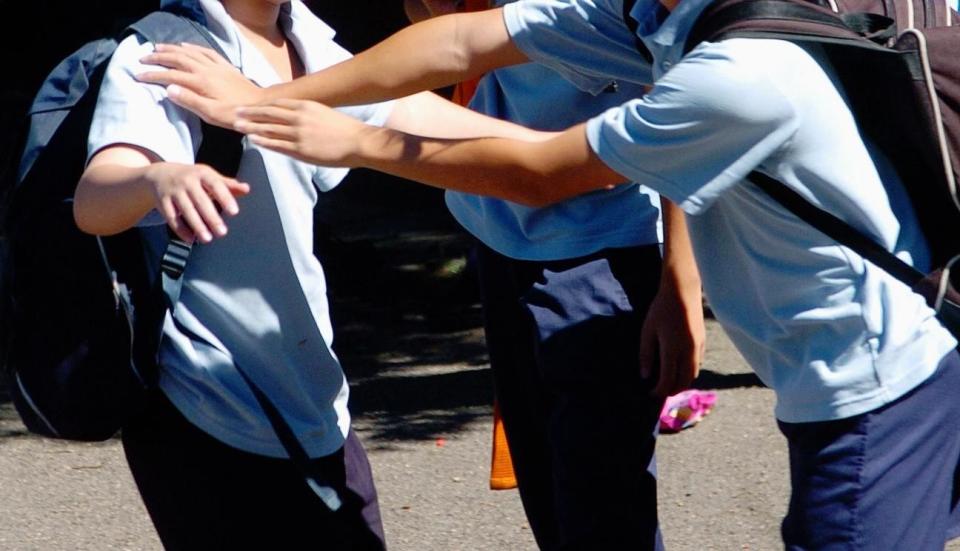What to Do If Your Child Is Being Bullied

The statistics are disheartening: As many as one in four school-aged kids have been bullied at school, while 30 percent of students have copped to bullying others—and 70 percent of young people have said they’ve witnessed bullying. (Seventy percent of teachers say they’ve seen it, too.)
October is National Bullying Prevention Month, 31 days set aside to take action against bullying, and educate people about how to prevent it. And so, it’s the perfect time to talk about what to do if you suspect your child is one of the hundreds of thousands of kids who face bullies each year.
Watch for subtle signs.
Your child may not tell you that he or she is being bullied, warns John Duffy, Ph.D., parenting expert and author of “The Available Parent.” But there are several signs you can look out for: “Bullied children often become quieter, and may withdraw to their rooms and spend more time alone,” he says. “They may seem irritable at home, and reluctant to talk about the reasons.” And he or she may resist or refuse going to school without a reasonable explanation in order to avoid a bully.
Sometimes, the signs of bullying manifest in new or unusual physical symptoms. “Some bullied kids report somatic complaints—headaches, stomach aches, or panic attacks,” Duffy explains. If you spot these signs, you should address them with your child.

Address bullying before the issue begins.
“Ideally, we as parents would have set the tone for this in an earlier discussion,” Duffy says, by saying something like, “Should you ever feel bullied, I want you to know that you can always come to me, no questions asked.”
If you didn’t set that tone, then now’s the time to gently ask if your child is facing a bully. Don’t be surprised, however, if your child doesn’t want to open up. “We need to let our kids know that we notice some negative change in them,” Duffy advises. “And that they can talk to us about it.”
Maintain a calm demeanor, and listen closely.
When discussing the issue of bullying with a child, Duffy says parents should be reserved and not become over-reactive. “Initially, we just need to listen, and acknowledge what our child is experiencing—only then should we go into problem-solving mode,” Duffy says. “I cannot emphasize how important this acknowledgement is to your child. He or she needs to know you understand they are being bullied, and it is difficult for them.”
Be sure you hear your child out fully and completely, Duffy says. “Ask them about the nature of the bullying, and do far more listening than talking,” he instructs, and also implores parents not to try to talk their kids out of their feelings, no matter how uncomfortable they may be to hear.
Brainstorm solutions together.
Once you've gotten to the bottom of the issue, it's time to talk through possible solutions with your child. “It’s important to let your child come up with solutions, or at the very least to play a role in brainstorming solutions, because this is an empowering moment in a very disempowering process,” Duffy explains. You can help drive the discussion by asking whether you should talk to the school or the bully’s parents, or if should speak to the bully directly to stem the tide of negative energy without drawing more to your child.
“Your more objective, adult judgment may suggest a different solution or a modification of your child’s idea,” Duffy says, but it’s still important he or she feel they were a part of the process.

Map out a plan of action.
Your plan will likely depend on the nature of the bullying. “If it’s an online situation, I find it’s useful to get the other parents or the school involved,” Duffy says. “This may be most useful in situations, for instance, in which a SnapChat account is made specifically to bully a child.”
If the bullying is more direct or verbal, however, Duffy suggests other solutions: “A child wholly ignoring the bully, believe it or not, often works,” he says. “Just walking by, and not offering the expected reaction, can often discourage a bully’s ongoing attention.” Another solution might be to encourage your child to be kind to the bully. “A, ‘hey, how’s it going?’ can also serve to throw a bully off track,” Duffy explains. But in the most extreme situations, “I think it’s crucial to get the school or other parents involved immediately,” he says. “After all, I find more and more that bullying can truly be a matter of health and safety, neither of which we can compromise.”
You Might Also Like


